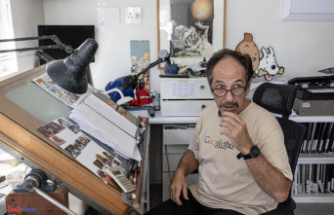No, at the Solvay Conference in 1927 no increased value was placed on gender equality. A single woman can be seen in the group picture: Marie Curie, discoverer of radioactivity and Nobel Prize winner in physics and chemistry. She was surrounded by 28 colleagues, including Albert Einstein, Werner Heisenberg and Erwin Schrödinger - and these are just the names that even laypeople immediately say something about.
A total of 17 of the 29 physicists present at the conference had already received a Nobel Prize at the time or were to receive it later. The group photo of the participants has therefore also become famous as the "picture with the highest IQ", it hangs in shared apartments, living rooms and scientific institutes: probably never before and since have so many extremely intelligent people gathered for a photo. However, the story behind it is not so well known.
The Solvay conference was a gathering of internationally renowned researchers in the field of physics - a kind of class reunion of the brightest physicists. The conference took place for the first time in 1911 and was named after the industrial magnate Ernest Solvay, who organized and financed the meetings. The scientists met regularly every year in Brussels to discuss a fundamental topic from the department. After the First World War, the conference only took place every three years.
The 1927 Solvay Conference was the fifth of its kind and is considered the most famous, mainly because of the illustrious field of participants. Only those who were invited were allowed to participate. Chaired by the Dutch theoretical physicist Hendrik Antoon Lorentz, "electrons and photons" were discussed at the Hotel Metropol in Brussels. For four days, from October 24th to 27th, 1927, the most brilliant researchers in the world talked their heads hot. In this respect, the harmony conveyed by the traditional group picture is deceptive.
The main focus was on Albert Einstein, winner of the 1921 Nobel Prize, and Niels Bohr, who received the 1922 Nobel Prize in Physics. The two scientists engaged in a heated discussion that later became known as the "Bohr-Einstein debate". The scientific elite was impressed by the revolutionary theory of quantum mechanics, which called into question many previous certainties of physics - instead, chance plays a greater role.
Einstein couldn't do much with it. This was not due to technical differences, but rather to his own world view - because the questions at stake are not only of a physical nature, but also affect philosophy. Einstein did not believe that chance rules the world. This attitude culminated in his famous saying, "God doesn't play dice."
The Dane Niels Bohr is one of the most prominent representatives of quantum mechanics. Based on the latest scientific knowledge, he argued that quantum reality does not exist at all independently of the observer. Bohr believed that observation creates its own reality. He and Einstein found no way to get closer - the two physicists continued to discuss for many years without coming to a solution.
Incidentally, the Solvay conference is still taking place in Brussels to this day - the names of the participants, however, should only mean something to experts. However, the numerical ratio between men and women is now more balanced.
Sources: Geo/SRF












